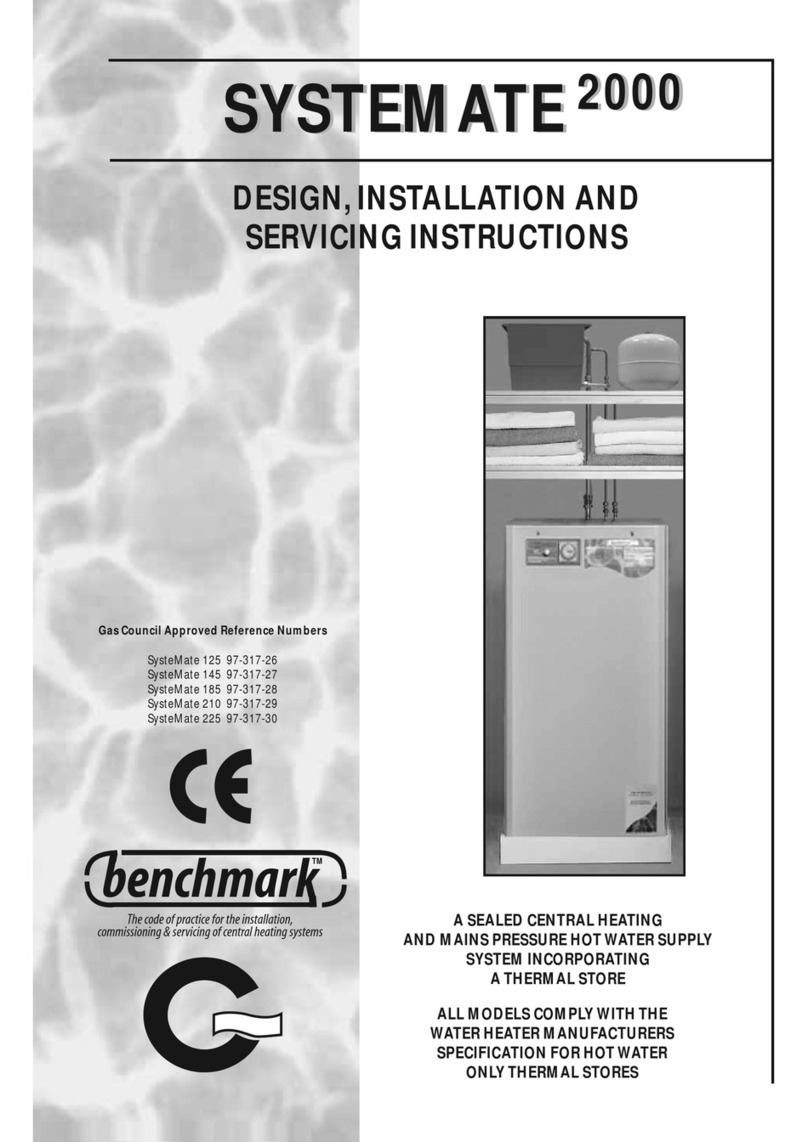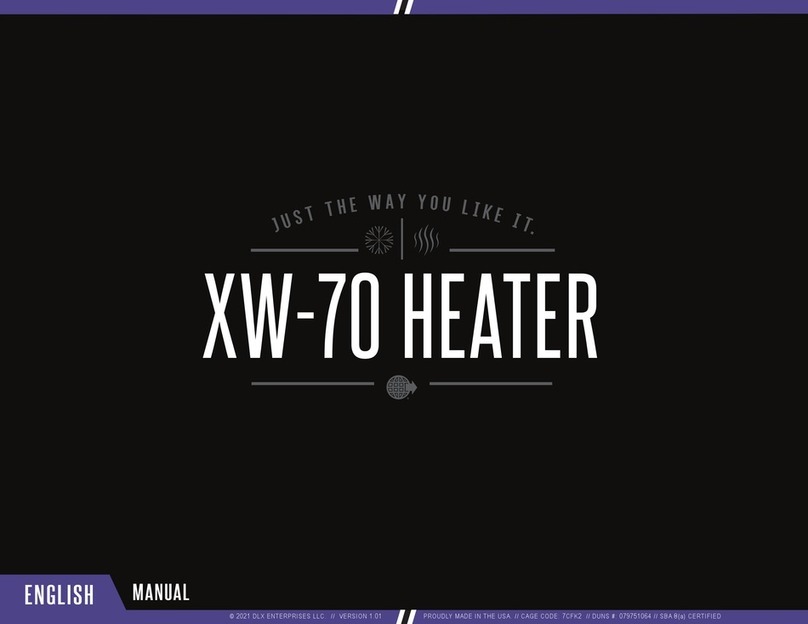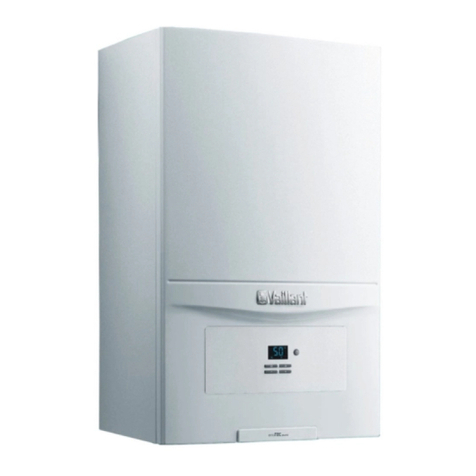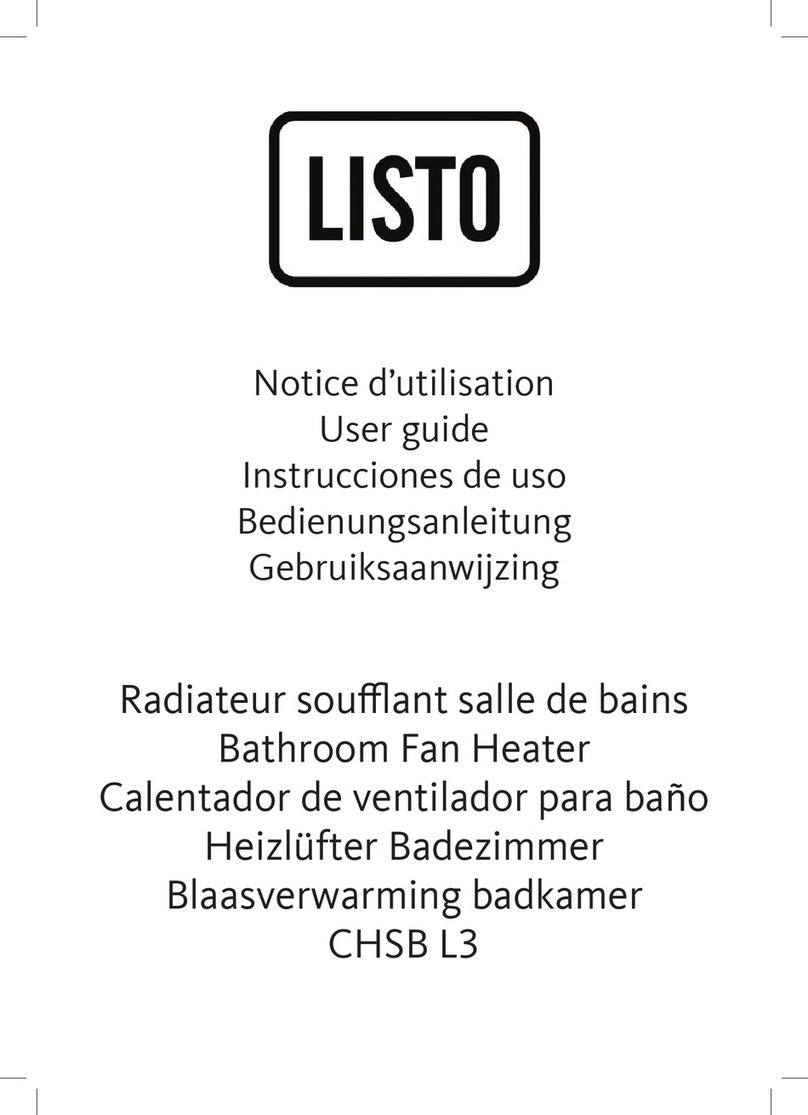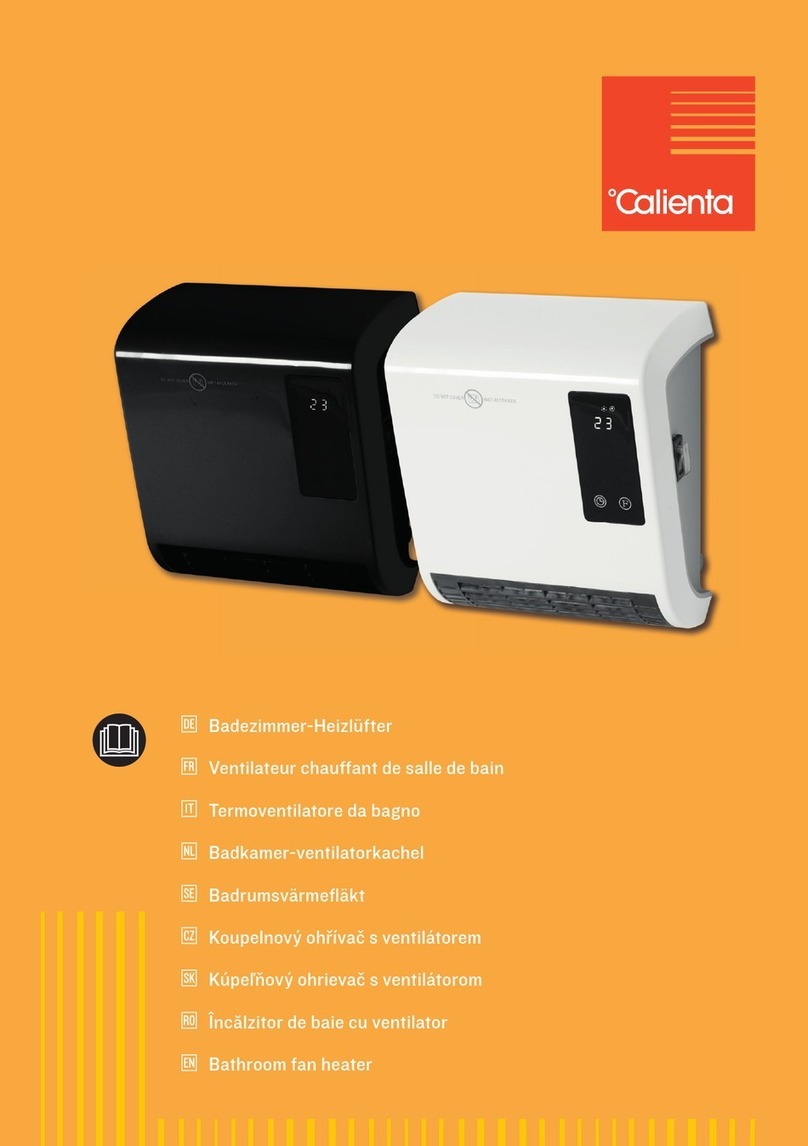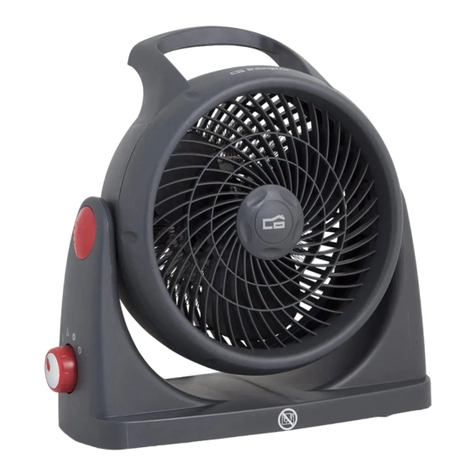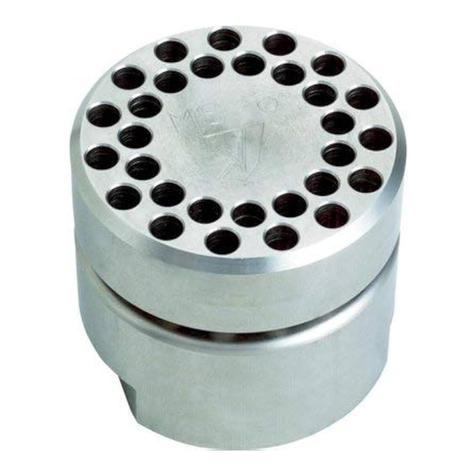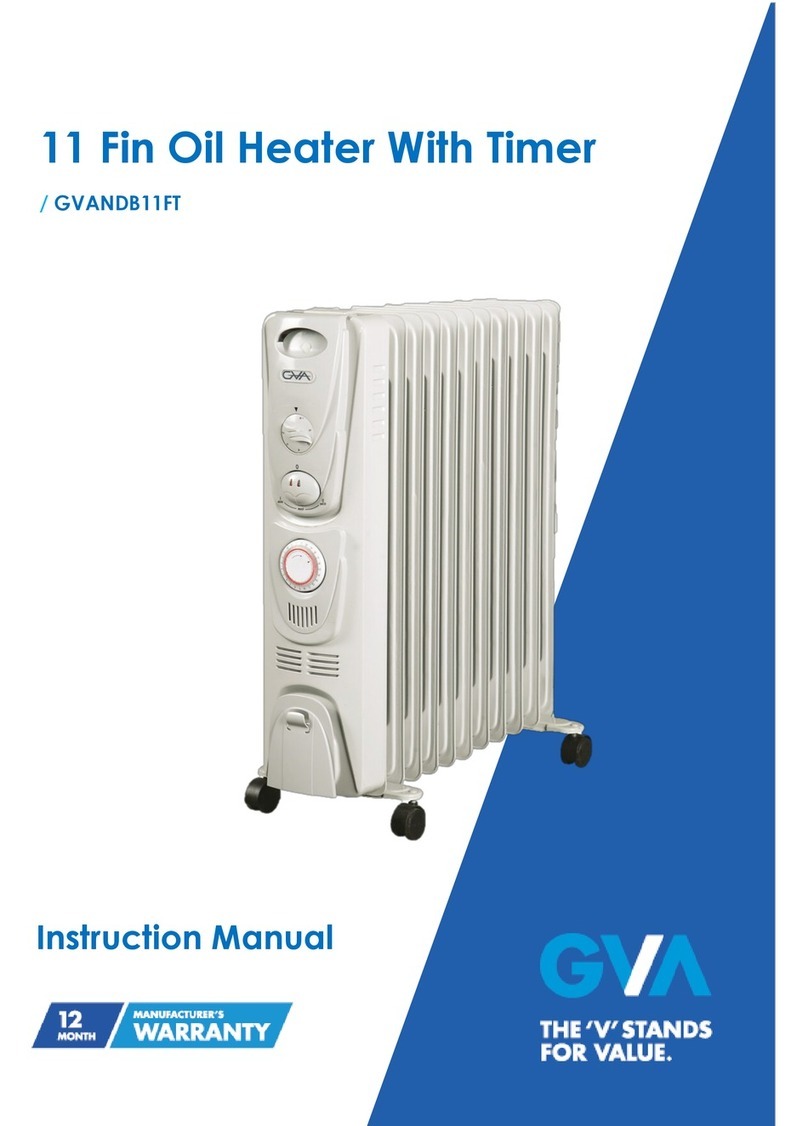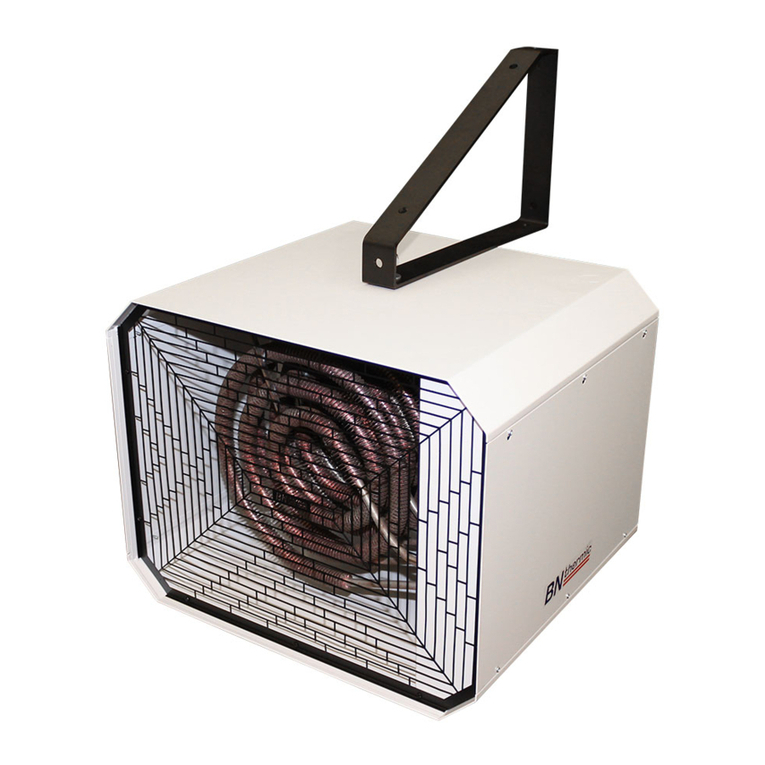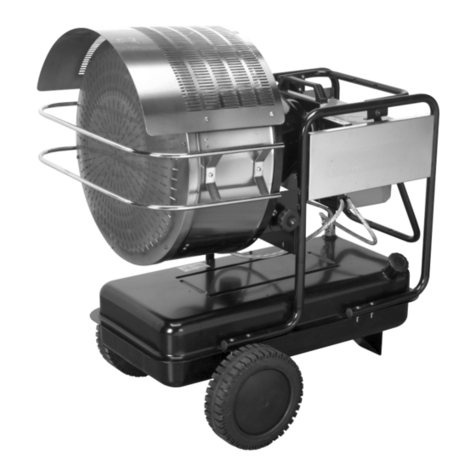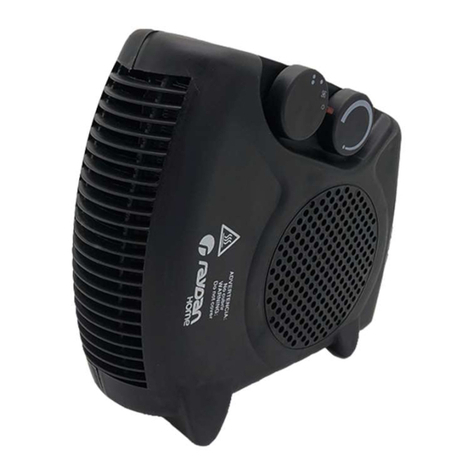Benchmark POTTERTON Gold User guide

1
1
PACK CONTENTS
The POTTERTON GOLD SOLAR unvented solar cylinder water heater incorporating immersion heater(s) and
thermal controls Factory tted temperature/pressure relief valve lCold water combination valve assembly l
Expansion vessel and mounting bracket lTundish lMotorised valve (indirect models only) l Compression nuts and
olives lImmersion heater spanner lInstallation instructions
IMPORTANT: PLEASE READ AND UNDERSTAND ALL THESE INSTRUCTIONS
BEFORE COMMENCING INSTALLATION. PLEASE LEAVE THIS MANUAL WITH
THE CUSTOMER FOR FUTURE REFERENCE.
NOTE: Prior to installation the unit should be stored in
an upright position in an area free from excessive damp
or humidity.
The POTTERTON GOLD SOLAR cylinder is a purpose
designed unvented solar water heater. The unit has a
stainless steel inner vessel, which ensures an excellent
standard of corrosion resistance.The outer casing is
a combination of resilient thermoplastic mouldings
and corrosion proofed steel sheet. All products are
insulated with CFC/HCFC free polyurethane foam to
meet the latest European heat loss requirements (see
Table 6 Page 19).
The unit is supplied complete with all the necessary
safety and control devices needed to allow connection
to the cold water mains. All these components are
preset and not adjustable.
This appliance complies with the requirements of the
CE marking directive and is Kiwa approved to show
compliance with Building Regulations (Section G3).
The following instructions are oered as a guide to
installation which must be carried out by a competent
plumbing and electrical installer in accordance with
Building Regulation G3, The Building Standards
(Scotland) Regulations 1990, or The Building
Regulations (Northern Ireland).
THE BENCHMARK SCHEME
Benchmark places responsibilities on both manufacturers and installers. The purpose is to ensure that customers
are provided with the correct equipment for their needs, that it is installed, commissioned and serviced in
accordance with the manufacturer’s instructions by competent persons and that it meets the requirements of
the appropriate Building Regulations. The Benchmark Checklist can be used to demonstrate compliance with
Building Regulations and should be provided to the customer for future reference.
Installers are required to carry out installation, commissioning and servicing work in accordance with the Benchmark
Code of Practice which is available from the Heating and Hotwater Industry Council who manage and promote
the Scheme. Visit www.centralheating.co.uk for more information.
IMPORTANT NOTE TO USER: PLEASE REFER TO THE USER INSTRUCTIONS SECTION ON PAGES 22 AND 23 FOR
IMPORTANT INFORMATION WITH RESPECT TO THE BENCHMARK SCHEME
UNVENTED MAINS PRESSURE SOLAR WATER HEATERS
170 TO 300 LITRE CAPACITY DIRECT AND INDIRECT MODELS
INSTALLATION AND SERVICING INSTRUCTIONS
INTRODUCTION

2
Contents
INTRODUCTION.................................................................1
GENERAL REQUIREMENTS.............................................3
INSTALLATION-GENERAL...............................................4
INSTALLATION - SOLAR PRIMARY...............................9
INSTALLATION - AUXILLARY HEATING COIL...........10
COMMISSIONING.............................................................12
MAINTENANCE..................................................................13
USER INSTRUCTIONS.......................................................14
FAULT FINDING AND SERVICING.................................15
HEAT LOSS ..........................................................................19
ENVIRONMENTAL INFORMATION...............................19
COMMISSIONING CHECK LIST......................................20
SERVICE RECORD..............................................................21
GUARANTEE.......................................................................24
TECHNICAL SUPPORT AND SPARES...........................24
PAG

3
3
Table 1: Unit weights
SITING THE UNIT
The POTTERTON GOLD SOLAR must be installed verti-
cally. Although location is not critical, the following
points should be considered:
The POTTERTON GOLD SOLAR should be sited to•
ensure minimum dead leg distances, particularly
to the point of most frequent use.
Avoid siting where extreme cold temperatures will•
be experienced. All exposed pipework should be
insulated.
The discharge pipework from the safety valves•
must have minimum fall of 1:200 from the unit
and terminate in a safe and visible position.
Access to associated controls and immersion•
heaters must be available to provide for the
servicing and maintenance of the system. Where
these controls are installed against a wall a minimum
distance of 250mm must be left (see Fig. 1).
Ensure that the oor area for the POTTERTON•
GOLD SOLAR cylinder is level and capable of
permanently supporting the weight when full of
water. (See Table 1).
Type Model
reference
Nominal
capacity
(litres)
Weight of
unit full
(kg)
DIRECT
210D 210 259
260D 260 308
300D 300 362
170D 170 210
INDIRECT
210I
250I
300I
190I 190 240
210 264
250 308
300 367
GENERAL REQUIREMENTS
WALL
Min 250mm Min 250mm
WATER SUPPLY
Bear in mind that the mains water supply to the
property will be supplying both the hot and cold water
requirements simultaneously. It is recommended that
the maximum water demand is assessed and the
water supply checked to ensure this demand can be
satisfactorily met.
Note: A high mains water pressure will not always
guarantee high ow rates.
Fig. 1: Siting the Unit
Wherever possible the mains supply pipe should be
22mm. We suggest the minimum supply requirements
should be 1.5 bar pressure and 20 litres per minute ow
rate. However, at these values outlet ow rates may
be poor if several outlets are used simultaneously. The
higher the available pressure and ow rate the better
the system performance.
The POTTERTON GOLD SOLAR cylinder has an operating
pressure of 3.5 bar which is controlled by the cold water
combination valve assembly.The cold water combination
valve assembly can be connected to a maximum mains
pressure of 16 bar.
OUTLET/TERMINAL FITTINGS (TAPS, ETC.)
The POTTERTON GOLD SOLAR cylinder can be used
with most types of terminal ttings. It is advantageous
in many mixer showers to have balanced hot and cold
water supplies. In these instances a balanced pressure
cold water connection should be placed between
the 2 pieces of the cold water combination valve
assembly (see Fig. 2). Outlets situated higher than the
POTTERTON GOLD SOLAR cylinder will give outlet
pressures lower than that at the heater, a 10m height
dierence will result in a 1 bar pressure reduction at
the outlet. All ttings, pipework and connections must
have a rated pressure of at least 6 bar at 80°C.
LIMITATIONS
The POTTERTON GOLD SOLAR cylinder should not be
used in association with any of the following:
• Solidfuelboilersoranyotherboilerinwhichthe
energy input is not under eective thermostatic
control unless additional and appropriate safety
measures are installed.
• Ascendingspraytypebidetsoranyotherclass
1 back syphonage risk requiring that a type A
air gap be employed.
• Steamheatingplants unlessadditionaland
appropriate safety devices are installed.
• Situationswheremaintenanceis likelytobe
neglected or safety devices tampered with.
• Water suppliesthathaveeither inadequate
pressure or where the supply may be
intermittent.
• Situationswhereitisnotpossibletosafelypipe
away any discharge from the safety valves.
• Inareaswherethewaterconsistentlycontains
a high proportion of solids, e.g. suspended
matter that could block the strainer, unless
adequate ltration can be ensured.
IMPORTANT: THIS APPLIANCE IS NOT INTENDED
FOR THE USE BY PERSONS (INCLUDING CHILDREN)
WITH REDUCED PHYSICAL, SENSORY OR MENTAL
CAPABILITIES, OR LACK OF KNOWLEDGE AND EX-
PERIENCE, UNLESS THEY HAVE BEEN GIVEN SUPER-
VISION OR INSTRUCTION CONCERNING THE USE OF
THE APPLIANCE BY A PERSON RESPONSIBLE FOR
THEIR SAFETY. CHILDREN MUST BE SUPERVISED.

4
OPERATIONAL SUMMARY
Maximum mains pressure 16 bar
Operating pressure 3.5 bar
Expansion vessel charge pressure 3.5 bar
Expansion relief valve setting 6 bar
T&P relief valve setting 90°C/10 bar
Maximum primary circuit pressure
(auxillary coil, indirect only) 3 bar
Maximum primary circuit pressure 6 bar (Solar coil)
Storage capacity See Table 1
Weight when full See Table 1
PIPE FITTINGS
All pipe ttings are made via 22mm compression
ttings directly to the unit. The ttings are threaded
3/4”BSP male parallel should threaded pipe
connections be required.
COLD FEED
A 22mm cold water supply is recommended, however
if a 15mm (1/2”) supply exists which provides sucient
ow this may be used (although more ow noise may
be experienced).
A stopcock or servicing valve should be incorporated
into the cold water supply to enable the POTTERTON
GOLD SOLAR cylinder and its associated controls to be
isolated and serviced.
COLDWATER COMBINATIONVALVE ASSEMBLY (FIG 2)
The 2-piece cold water combination valve assembly
can be located anywhere on the cold water mains
supply prior to the expansion vessel (see Fig. 6 Page
8 ) but the two pieces do not have to be installed
together. The pressure reducing valve incorporates the
pressure reducer and strainer and the expansion valve
incorporates the expansion and check valves. Ensure
that the valves are installed in the correct order and
orientation. No other valves should be placed between
the expansion valve and the POTTERTON GOLD
SOLAR unit. A connection can be made between the
expansion and pressure reducing valves to provide a
balanced cold water connection. The expansion valve
connection must not be used for any other purpose.
Fig. 2: Cold water combination valve assembly
INSTALLATION - GENERAL
(FIGS 4 & 6)
POTTERTON GOLD SOLAR MUST BE INCORPORATED
INTO A FULLY PUMPED SOLAR PRIMARY CIRCUIT.
CONTROL OF THE SOLAR PRIMARY IS ACHIEVED BY
THE USE OF EXTERNAL CONTROLS NOT SUPPLIED
WITH THE UNIT. CONTROL MUST BE VIA A PURPOSE
DESIGNED SOLAR HYDRAULIC STATION AND SOLAR
DIFFERENTIAL TEMPERATURE CONTROLLER.
IMPORTANT NOTE:
DRAIN TAP
A suitable draining tap should be installed in the
cold water supply to the POTTERTON GOLD SOLAR
cylinder unit between the expansion valve (see Fig.
6 Page 8 ) and the heater at as low a level as possible.
It is recommended that the outlet point of the drain
pipework be at least 1 metre below the level of the
heater (this can be achieved by attaching a hose to the
drain tap outlet spigot).
EXPANSION VESSEL
The expansion vessel accommodates expansion
that results from heating the water inside the unit.
The expansion vessel is pre-charged at 3.5 bar. The
expansion vessel must be connected between the
expansion valve (see Fig. 2) and the POTTERTON GOLD
SOLAR cylinder (see Fig. 6 Page 8). The location of the
expansion vessel should allow access to recharge the
pressure as and when necessary, this can be done
using a normal car foot pump. It is recommended
that the expansion vessel is adequately supported. An
expansion vessel wall mounting bracket is supplied for
this purpose and should be tted.
NOTE: DO NOT USE THE POTABLE WATER
EXPANSION VESSEL SUPPLIED WITH THE
POTTERTON GOLD SOLAR CYLINDER FOR ANY
OTHER PURPOSE. IT IS NOT SUITABLE FOR USE ON
A SOLAR PRIMARY CIRCUIT.
SECONDARY CIRCULATION
If secondary circulation is required it is recommended
that it be connected to the POTTERTON GOLD SOLAR
cylinder as shown in Fig. 3. The secondary return pipe
should be in 15mm pipe and incorporate a check valve
to prevent backow. A suitable WRAS approved bronze
circulation pump will be required. On large systems,
due to the increase in system water content, it may be
necessary to t an additional expansion vessel to the
secondary circuit. This should be done if the capacity of
the secondary circuit exceeds 10 litres.
Pipe capacity (copper)
15mm O.D = 0.13 l/m (10 litres = 77m)
22mm O.D = 0.38 l/m (10 litres = 26m)
28mm O.D = 0.55 l/m (10 litres = 18m)

5
5
OUTLET
The hot water outlet is a 22mm compression
tting located at the top of the cylinder. Hot water
distribution pipework should be 22mm pipe with
short runs of 15mm pipe to terminal ttings such as
sinks and basins. Pipe sizes may vary due to system
design.
Fig. 3: Secondary circulation connection
Table 2: Dimensions and performance
170 1201.1925
047
190
210 741481187700013741
210
260
250
300
300
SOLAR
SURFACE
AREA (m)
FE
NOMINAL
CAPACITY
(litres)
)mm(DIMENSIONSEPYT
A B C D SURFACE
AREA (m)
RATING
(kW)
RECOVERY
(mins)
AUXILLARY
VOLUME
(litres)
AUXILLARY COIL
TIME DIRECT
(mins)
DIRECT
HEATING
1.1 120 0.61 11.9 22
1.1 140
803 923
732
1372
1473 1009 925 1095 1184
1019
1.1 120 0.68 15.2 17
1792 1072 842 1440 1.1 170
178
1731 1160 1072 1391 1.1 145 0.79 15.2 21
2038 1409 933 1715 1.1 200 210
2038 1438 1243 1573
1258
1715 1.1 175 0.79 17.4 22
1261221
NOTES:
1. Recovery time based on heating 70% of auxillary volume through 45°C
2. Direct heating times assume use of lower element only and auxillary cylinder volume being heated.
INDIRECT
HEAT UP
(mins)
42
33
40
42
370
433
412
29
A
B
C
E
D
20°
25°
30°
Ø
594
550
45°
81
Fig. 4: General dimensions

6
DISCHARGE PIPEWORK
It is a requirement of Building Regulation G3
that any discharge from an unvented system
is conveyed to where it is visible, but will not
cause danger to persons in or about the building.
The tundish and discharge pipes should be
tted in accordance with the requirements and
guidance notes of Building Regulation G3.The G3
Requirements and Guidance section 3.50 - 3.63
are reproduced in the following sections of
this manual. For discharge pipe arrangements
not covered by G3 Guidance advice should be
sought from your local Building Control Ocer.
Any discharge pipe connected to the pressure
relief devices (Expansion Valve and Temperature/
Pressure Relief Valve) must be installed in a
continuously downward direction and in a frost
free environment.
Water may drip from the discharge pipe of the
pressure relief device. This pipe must be left open
to the atmosphere. The pressure relief device is
to be operated regularly to remove lime deposits
and to verify that it is not blocked.
G3 REQUIREMENT
“...there shall be precautions...to ensure that the
hot water discharged from safety devices is safely
conveyed to where it is visible but will not cause
danger to persons in or about the building.”
The following exract is taken from the latest G3
Regulations
Discharge pipes from safety devices
Discharge pipe D1
3.50 Each of the temperature relief valves or combined
temperature and pressure relief valves specied in 3.13 or
3.17 should discharge either directly or by way of a mani-
fold via a short length of metal pipe (D1) to a tundish.
3.51 The diameter of discharge pipe (D1) should be not
less than the nominal outlet size of the temperature relief
valve.
3.52 Where a manifold is used it should be sized to accept
and discharge the total discharge form the discharge pipes
connected to it.
3.53 Where valves other than the temperature and pres-
sure relief valve from a single unvented hot water system
discharge by way of the same manifold that is used by the
safety devices, the manifold should be factory tted as part
of the hot water storage system unit or package.
Tundish
3.54 The tundish should be vertical, located in the same
space as the unvented hot water storage system and be t-
ted as close as possible to, and lower than, the valve, with
no more than 600mm of pipe between the valve outlet and
the tundish (see Diagram 1).
Note: To comply with the Water Supply (Water Fittings)
Regulations, the tundish should incorporate a suitable air
gap.
3.55 Any discharge should be visible at the tundish. In
addition, where discharges from safety devices may not
be apparent, e.g. in dwellings occupied by people with
impaired vision or mobility, consideration should be given
to the installation of a suitable safety device to warn when
discharge takes place, e.g. electronically operated.
Discharge pipe D2
3.56 The discharge pipe (D2) from the tundish should:
(a) have a vertical section of pipe at least 300mm long
below the tundish before any elbows or bends in the pipe-
work (see Diagram 1); and
(b) be installed with a continuous fall thereafter of at
least 1 in 200.
3.57 The discharge pipe (D2) should be made of:
(a) metal; or
(b) other material that has been demonstrated to be
capable of safely withstanding temperatures of the water
discharged and is clearly and permanently marked to
identify the product and performance standard (e.g. as
specied in the relevant part of BS 7291).
3.58 The discharge pipe (D2) should be at least one pipe
size larger than the nominal outlet size of the safety device
unless its total equivalent hydraulic resistance exceeds that
of a straight pipe 9m long, i.e. for discharge pipes between
9m and 18m the equivalent resistance length should be at
least two sizes larger than the nominal outlet size of the
safety device; between 18 and 27m at least 3 sizes larger,
and so on; bends must be taken into account in calculating
the ow resistance. See Diagram 1, Table 1 and the worked
example.
Note: An alternative approach for sizing discharge pipes
would be to follow Annex D, section D.2 of BS 6700:2006
Specication for design, installation, testing and mainte-
nance of services supplying water for domestic use within
buildings and their curtilages.
3.59 Where a single common discharge pipe serves more
than one system, it should be at least one pipe size larger
than the largest individual discharge pipe (D2) to be con-
nected.
3.60 The discharge pipe should not be connected to a soil
discharge stack unless it can be demonstrated that that
the soil discharge stack is capable of safely withstanding
temperatures of the water discharged, in which case, it
should:
(a) contain a mechanical seal, not incorporating a water
trap, which allows water into the branch pipe without al-
lowing foul air from the drain to be ventilated through the
tundish;
(b) be a separate branch pipe with no sanitary appli-
ances connected to it;
(c) if plastic pipes are used as branch pipes carrying
discharge from a safety device they should be either polyb-
utalene (PB) to Class S of BS 7291-2:2006 or cross linked
polyethylene (PE-X) to Class S of BS 7291-3:2006; and
(d) be continuously marked with a warning that no
sanitary appliances should be connected to the pipe.

7
7
From Table 3:
Maximum resistance allowed for a straight length
of 22mm copper discharge pipe (D2) from a G1/2
temperature relief valve is 9.0m.
Subtract the resistance for 4 No. 22mm elbows at 0.8m
each = 3.2m
Therefore the permitted length equates to: 5.8m
5.8m is less than the actual length of 7m therefore
calculate the next largest size.
Maximum resistance allowed for a straight length of
28mm pipe (D2) from a G1/2 temperature relief valves
equates to 18m.
Subtract the resistance of 4 No. 28mm elbows at 1.0m
each = 4.0m
Therefore the maximum permitted length equates to:
14m
As the actual length is 7m, a 28mm (D2) copper pipe
will be satisfactory.
WARNINGS
• Undernocircumstancesshouldthefactory
fitted temperature/pressure relief valve be
removed other than by a competent person.To
do so will invalidate any guarantee or claim.
• The cold water combination valve assembly
must be tted to the mains water supply to the
POTTERTON GOLD SOLAR cylinder.
• Nocontrolorsafetyvalvesshouldbetampered
with or used for any other purpose.
• Thedischargepipeshouldnotbeblockedor
used for any other purpose.
• Thetundishshouldnotbelocatedadjacentto
any electrical components.
Table 3: Sizing of copper discharge pipe (D2) for common temperature relief valve outlet sizes
Valve outlet size
Minimum size of
discharge pipe
D1
Minimum size of
discharge pipe
D2 from tundish
Maximum
resistance
allowed, expressed
as a length of
straight pipe (i.e.
no elbows or
bends)
Resistance
created by each
elbow or bend
G1/2 15mm
22mm
28mm
35mm
up to 9m
up to 18m
up to 27m
0.8m
1.0m
1.4m
G3/4 22mm
28mm
35mm
42mm
up to 9m
up to 18m
up to 27m
1.0m
1.4m
1.7m
G1 28mm
35mm
42mm
54mm
up to 9m
up to 18m
up to 27m
1.4m
1.7m
2.3m
Note:
1. Plastic pipes should be joined and assembled with
ttings appropriate to the circumstances in which they are
used as set out in BS EN ISO 1043-1.
2. Where pipes cannot be connected to the stack it may
be possible to route a dedicated pipe alongside or in close
proximity to the discharge stack.
Termination of discharge pipe
3.61 The discharge pipe (D2) from the tundish should
terminate in a safe place where there is no risk to persons
in the vicinity of the discharge.
3.62 Examples of acceptable discharge arrangements are:
(a) to a trapped gully with the end of the pipe below a
xed grating and above the water seal;
(b) downward discharges at low level; i.e. up to 100mm
above external surfaces such as car parks, hard standings,
grassed areas etc. are acceptable providing that a wire
cage or similar guard is positioned to prevent contact,
whilst maintaining visibility; and
(c) discharges at high level: e.g. into a metal hopper
and metal downpipe with the end of the discharge pipe
clearly visible or onto a roof capable of withstanding high
temperature discharges of water and 3m from any plastic
guttering system that would collect such discharges.
3.63 The discharge would consist of high temperature
water and steam. Asphalt, roong felt and non-metallic
rainwater goods may be damaged by such discharges.
Worked example of discharge pipe sizing
Fig. 5 is for a G1/2 temperature relief valve with a
discharge pipe (D2) having 4 No. elbows and length of
7m from the tundish to the point of discharge.

8
Fig. 6: Typical installation - schematic
EXPANSION
VESSEL
T&P RELIEF
VALVE
TO HOT
OUTLETS
MAINS
WATER
SUPPLY
ISOLATING
VALVE (NOT
SUPPLIED)
TUNDISH
DISCHARGE
PIPE
DRAIN COCK
(NOT SUPPLIED)
SOLAR PRIMARY
RETURN
SOLAR PRIMARY
FLOW
SOLAR
CONTROLS
HOUSING
INLET
SECONDARY RETURN TAPPING
(IF REQUIRED)
COLD WATER
COMBINATION
VALVE
(2-PIECE)
BALANCED
COLD WATER
CONNECTION
(IF REQUIRED)
AUX. PRIMARY
RETURN
AUX. PRIMARY
FLOW
BOOST ELEMENT/
AUX. CONTROL
HOUSING
Fig.5: Typical discharge pipe arrangement (extract from Building Regulation G3 Guidance section)
Fixed grating
Discharge below
fixed grating
(Building Regulation
G3 section 3.61 gives
alternative points
of discharge)
Trapped
gully
Discharge pipe (D2) from tundish,
with continuous fall. See Building
Regulation G3 section 3.56, Table 1
and worked example
300mm
minimum
600mm maximum
Metal discharge pipe (D1) from
Temperature relief valve to tundish
Tundish
Safety device
(e.g. Temperature
relief valve)

9
9
Fig.7 Electrical Connections (Schematic)
AUXILLARY HEATING CONTROL
DIRECT MODELS
CONNECTION TO SOLAR PRIMARY CIRCUIT
The lower (solar) coil of the POTTERTON GOLD SOLAR
cylinder must be connected to a fully pumped solar
primary circuit. The connections are suitable for
22mm copper pipe direct to the compression ttings
provided. The connections are also threaded 3/4” BSP
male parallel should BSP be required.
The solar primary circuit should have its own dedicated
circulating pump and safety controls which must be
installed as per the manufacturer’s instructions.
INSTALLATION - SOLAR PRIMARY
CONTROL OF SOLAR PRIMARY CIRCUIT
Temperature control of the POTTERTON GOLD
SOLAR cylinder must be carried out using a suitable
proprietory Solar Controller/Programmer. The cylinder
temperature sensing probe (supplied with the solar
controller) should be fully inserted into the pocket
provided on the POTTERTON GOLD SOLAR cylinder
and its cable secured using the cable clamps on the
controls housing ( see Fig. 8 ).
Connection to the solar controller should be in
accordance with the manufacturers instructions.
The solar controller should be programmed to give a
cylinder temperature of approximately 60° (maximum
70°C ).
Fig. 8: Solar Control Connections
The solar controller and solar primary circulation
pump must be wired via the over-temperature cut-
out mounted in the lower solar controls housing.
This will ensure that the heat input to the solar coil is
interrupted in the event of the cylinder over-heating.
There must also be suitable check (non-return) valves
installed in the solar primary ow and return to
prevent the possibility of any thermo-syphoning if the
solar circulation is stopped.

10
SAFETY
DISCONNECT FROM THE MAINS SUPPLY BE-
FORE REMOVING ANY COVERS. Never attempt
to replace the immersion heater(s) other than with
the recommended POTTERTON GOLD immersion
heater(s).
DO NOT BYPASS THE THERMAL CUT-OUT(S)
IN ANY CIRCUMSTANCES. Ensure the two male
spade terminations on the underside of the com-
bined thermostat and thermal cut-out are pushed
rmly onto the corresponding terminations on the
element plate assembly.
In case of difculty contact service support; con-
tact details available at the back of this booklet.
INSTALLATION - DIRECT UNITS
PLUMBING CONNECTIONS
Direct units require the following pipework
connections.
•Cold water supply to and from inlet controls.
•Outlet to hot water draw o points.
•Discharge pipework from valve outlets to
tundish.
ELECTRICAL SUPPLY (FIG. 6)
POTTERTON GOLD SOLAR units are tted with
two 3kW immersion heaters as standard. It is
recommended that these should be wired via a
suitable controller to BSEN 60730. The POTTERTON
GOLD SOLAR MUST be earthed. All wiring to the
unit must be installed in accordance with the latest IEE
Wiring Regulations and the circuit must be protected
by a suitable fuse and double pole isolating switch
with a contact separation of at least 3mm in both
poles. The Live and Neutral connections are made
directly onto the combined thermostat and thermal
cut-out located under the terminal cover(s) mounted
on the front of the unit. The earth connection should
be made to the earth connection located to the side of
the immersion heater boss(es). The supply cable must
be routed through the cable gland located on the unit
casing beneath the terminal housing.
DO NOT operate the immersion heaters until the
POTTERTON GOLD SOLAR has been lled with water.
PLUMBING CONNECTIONS
POTTERTON GOLD SOLAR cylinders require the
following pipework connections.
•Cold water supply to and from inlet controls.
•Outlet to hot water draw o points.
•Discharge pipework from valve outlets to
tundish
•Connection to the auxillary primary circuit.
Primary connections are 22mm compression. However,
3/4”BSP parallel threaded ttings can be tted to the
primary coil connections if required.
ELECTRICAL SUPPLY (FIG. 7 Page 9)
All units are tted with a 3kW immersion heater and a
combined thermostat and thermal cut-out to control
the primary heating source. The POTTERTON GOLD
SOLAR cylinder MUST be earthed.
All wiring to the unit must be installed in accordance
with the latest IEE Wiring Regulations and the supply
circuits must be protected by a suitable fuse and
double pole isolating switch with a contact separation
of at least 3mm in both poles. All connections are
made to the terminal block located under the terminal
cover mounted on the side of the unit. The supply
cable(s) must be routed through the cable grip(s) in
the terminal housing.
DISCONNECT FROM MAINS SUPPLY BEFORE
REMOVING ANY COVERS. Never attempt to
replace the immersion heater(s) other than with the
recommended POTTERTON GOLD SOLAR immersion
heater(s).
DO NOT BYPASS THE THERMAL CUTOUTS IN
ANY CIRCUMSTANCES. Ensure the two male spade
terminations on the underside of the combined
thermostat and thermal cut-out are pushed rmly
onto the corresponding terminations on the element
plate assembly. In case of diculty contact service
support; contact details available at the back of this
booklet.
BOILER SELECTION
The boiler should have a control thermostat and non
self-resetting thermal cut-out and be compatible with
unvented storage water heaters.
Where use of a boiler without a thermal cut-out is
unavoidable a“low head” open vented primary circuit
should be used. The feed and expansion cistern head
above the POTTERTON GOLD SOLAR cylinder should
not exceed 2.5m.
AUXILLARY PRIMARY CIRCUIT CONTROL
The 2-port motorised valve supplied with the
POTTERTON GOLD SOLAR cylinder MUST be tted to
the primary auxillary circuit ow to the POTTERTON
GOLD SOLAR cylinder heat exchanger and wired
in series with the indirect thermostat and thermal
cut-out tted to the unit. Primary circulation to the
POTTERTON GOLD SOLAR cylinder heat exchangers
must be pumped; gravity circulation WILL NOT WORK.
INSTALLATION - AUXILLARY
HEATING COIL
SPACE AND HEATING SYSTEMS CONTROLS
The controls provided with the POTTERTON GOLD
SOLAR cylinder will ensure the safe operation of
the unit within the central heating system. Other
controls will be necessary to control the space heating
requirements and times that the system is required to
function. (See Fig. 7 Page 9)
The POTTERTON GOLD SOLAR cylinder is compatible
with most heating controls, examples of electrical
circuits are shown in Figs. 9 and 10. However, other
systems may be suitable, refer to the controls
manufacturers’instructions, supplied with the controls
selected, for alternative system wiring schemes.

11
11
Fig. 9: Schematic wiring diagram - Basic 2 x 2 port valve system
Fig.10: Schematic wiring diagram - 3 port mid position valve system. N.B. Must be used in conjunction with 2
port zone valve supplied

12
At the time of commissioning, please ensure all relevant
sections of the Benchmark Checklist, ( Page 20 and 21 )
of this document, are completed.
FILLING THE UNIT WITH WATER
• Check expansion vessel pre-charge pressure.
The vessel is supplied pre-charged to 3.5 bar
to match the control pressure of the pressure
reducing valve. The pre-charge pressure is
checked using a car tyre gauge by unscrewing
the plastic cap opposite the water connection.
• Check all connections for tightness including
the immersion heater(s). An immersion heater
key spanner is supplied for this purpose.
• Ensure the drain cock is CLOSED.
• Open a hot tap furthest from the POTTERTON
GOLD SOLAR cylinder.
• Open the mains stop cock to ll the unit. When
water ows from the tap, allow to run for a
few minutes to thoroughly ush through any
residue, dirt or swarf, then close the tap.
• Open successive hot taps to purge the system
of air.
SYSTEM CHECKS
• Check all water connections for leaks and rectify
as necessary.
Turn o mains water supply.•
• Remove the pressure reducing valve headwork
to access the strainer mesh; clean and re-t.
• Manually open, for a few seconds, each relief
valve in turn, checking that water is discharged
and runs freely through the tundish and out at
the discharge point.
• Ensure that the valve(s) reseat satisfactorily.
SOLAR PRIMARY CIRCUIT
Fill the solar primary circuit following the instructions
provided with the solar hydraulic controls. The
cylinder temperature control probe supplied with
the solar controller must be fully inserted into the
pocket in the lower controls housing and the cable
securely clamped. Heating by the solar primary
circuit is controlled by the solar controller; refer to the
manufacturer’s installation instructions for details of
how to set up and connect the solar primary circuit.
The solar controller should be programmed to give
a maximum storage temperature in the POTTERTON
GOLD SOLAR cylinder of 70oC, (60oC is recommended
to minimise scaling).
COMMISSIONING
SECONDARY HEATING COIL
Fill the indirect secondary circuit following the boiler
manufacturer’s commissioning instructions. To ensure
the POTTERTON GOLD SOLAR cylinder auxillary
heat exchanger is lled, the 2 port motorised valve
(supplied) should be manually opened by moving the
lever on the motor housing to the FLUSHING ONLY
setting. When the circuit is full return the lever to the
MANUAL position. Switch on the boiler, ensure the
programmer is set to Domestic Hot Water and allow
the POTTERTON GOLD SOLAR cylinder to heat up to
a normal working temperature (60oC recommended,
approximately graduation 4 on the thermostat).
If necessary the temperature can be adjusted by
inserting a at bladed screwdriver in the adjustment
knob (located on top of the thermostat mounting
bracket - see Fig.11) and rotating. The minimum
thermostat setting is 10oC. The adjustment range 1 to
5 represents a temperature range of 30 to 70oC. Check
the operation of the indirect thermostat and 2-port
motorised valve and that no water has issued from the
expansion relief valve or temperature/pressure relief
valve during the heating cycle.
DIRECT UNITS
Switch on electrical supply to the immersion
heater(s) and allow the POTTERTON GOLD SOLAR to
heat up to normal working temperature (60ºC recom-
mended, approximately graduation 4 on the thermo-
stat). If necessary the temperature can be adjusted by
inserting a at bladed screwdriver in the adjustment
knob on top of the immersion heater thermostat and
rotating.
The adjustment range 1 to 5 represents a tempera
ture range of 10oto 70oC. Check the operation of
thermostat(s) and that no water has issued from the
expansion relief valve or temperature/pressure
relief valve during the heating cycle.
Fig. 11: Indirect thermostat and thermal cut-out

13
13
MAINTENANCE REQUIREMENTS
Unvented hot water systems have a continuing
maintenance requirement in order to ensure safe
working and optimum performance. It is essential
that the relief valve(s) are periodically inspected and
manually opened to ensure no blockage has occurred
in the valves or discharge pipework. Similarly cleaning
of the strainer element and replacement of the air
in the expansion vessel will help to prevent possible
operational faults.
The maintenance checks described below should be
performed by a competent installer on a regular basis,
e.g. annually to coincide with boiler maintenance.
After any maintenance, please complete the relevant
Service Interval Record section of the Benchmark
Checklist ( Page 21 ) of this document.
SAFETY VALVE OPERATION
Manually operate the temperature/pressure relief
valve for a few seconds. Check water is discharged and
that it ows freely through the tundish and discharge
pipework. Check valve reseats correctly when released.
NOTE: Water discharged may be very hot!
Repeat the above procedure for the expansion valve.
STRAINER
Turn o the cold water supply, boiler and immersion
heaters. The lowest hot water tap should then be
opened to de-pressurise the system. Remove the
pressure reducing valve cartridge to access the strainer
mesh. Wash any particulate matter from the strainer
under clean water. Re-assemble ensuring the seal is
correctly tted, DO NOT use any other type of sealant.
DESCALING IMMERSION HEATER(S)
Before removing the immersion heater(s) the unit must
be drained. Ensure the water, electrical supply, boiler
and solar primary circuit are OFF before draining.
Attach a hosepipe to the drain cock having sucient
length to take water to a suitable discharge point
below the level of the unit. Open a hot tap close to the
unit and open drain cock to drain unit.
MAINTENANCE
DIRECT MODELS:
Open the cover(s) to the immersion heater housing(s)
and disconnect wiring from the thermostat mounted
on top of the immersion heater(s). Remove the
thermostat by carefully pulling outwards from
the immersion heater. Unscrew immersion heater
backnut(s) and remove immersion heater from the
unit. A key spanner is supplied with the Potterton
Gold Solar unit for easy removal/tightening of the
immersion heater(s). Over time the immersion heater
gasket may become stuck to the mating surface.
To break the seal insert a round bladed screwdriver
into one of the pockets on the immersion heater and
gently lever up and down.
INDIRECT MODELS
Open the cover(s) to the immersion heater housing(s)
and disconnect wiring from immersion heater(s).
Remove the thermostat by carefully pulling outwards
from the immersion heater. Remove thermostat
capillary sensors from the pockets on the immersion
heater. Unscrew immersion heater backnut(s) and
remove immersion heater from the unit. A key spanner
is supplied with the POTTERTON GOLD SOLAR
cylinder for easy removal/tightening of the immersion
heater(s). Over time the immersion heater gasket may
become stuck to the mating surface. To break the
seal insert a round bladed screwdriver into one of the
pockets on the immersion heater and gently lever up
and down.
Carefully remove any scale from the surface of the
element(s). DO NOT use a sharp implement as damage
to the element surface could be caused. Ensure sealing
surfaces are clean and seals are undamaged, if in
doubt t a new gasket. ( part number 95 611 822 ).
Replace immersion heater(s) ensuring the right
angled element hangs vertically downwards towards
the base of the unit. It may be helpful to support the
immersion heater using a round bladed screwdriver
inserted into one of the thermostat pockets whilst the
backnut is tightened. Replace thermostat capillaries
into pocket. Replace the immersion heater thermostat
by carefully plugging the two male spade terminations
on the underside of the thermostat head into the
corresponding terminations on the element. Rewire,
check, close and secure immersion heater housing
cover(s).
EXPANSION VESSEL CHARGE PRESSURE
Remove the dust cap on top of the vessel. Check the
charge pressure using a tyre pressure gauge. The
pressure (with system de-pressurised) should be
3.5bar. If it is lower than the required setting it should
be re-charged using a tyre pump (Schrader valve
type). DO NOT OVER CHARGE. Re-check the pressure
and when correct replace the dust cap.
RE-COMMISSIONING
Check all electrical and plumbing connections are
secure. Close the drain cock. With a hot tap open, turn
on the cold water supply and allow unit to rell. DO
NOT switch on the immersion heater(s) or boiler until
the unit is full. When water ows from the hot tap
allow to ow for a short while to purge air and ush
through any disturbed particles. Close hot tap and
then open successive hot taps in system to purge any
air.
When completely full and purged check system for
leaks. The heating source (immersion heater(s), boiler
or solar primary circuit) can then be switched on.

14
WARNINGS
IF WATER ISSUES FROM THE TEMPERATURE/
PRESSURE RELIEF VALVE ON THE POTTERTON
GOLD SOLAR CYLINDER SWITCH OFF ELECTRICAL
SUPPLY TO THE IMMERSION HEATER(S), SHUT
DOWN THE BOILER AND SHUT DOWN THE SOLAR
PRIMARY CIRCUIT. DO NOT TURN OFF ANY WATER
SUPPLY. CONTACT A COMPETENT INSTALLER
FOR UNVENTED WATER HEATERS TO CHECK THE
SYSTEM.
DO NOT TAMPER WITH ANY OF THE SAFETY VALVES
FITTED TO THE POTTERTON GOLD SOLAR SYSTEM.
IF A FAULT IS SUSPECTED CONTACT A COMPETENT
INSTALLER.
USER INSTRUCTIONS
BENCHMARK
The POTTERTON GOLD SOLAR cylinder is covered by
the Benchmark Scheme which aims to improve the
standards of installation and commissioning of domestic
heating and hot water systems in the UK and to encour-
age regular servicing to optimise safety, eciency and
performance.
Benchmark is managed and promoted by the Heating
and Hotwater Industry Council. For more information
visit www.centralheating.co.uk.
Please ensure that the installer has fully completed the
Benchmark Checklist on Page 20 of this manual and that
you have signed it to say that you have received a full
and clear explanation of its operation.
The installer is legally required to complete a
commissioning checklist as a means of complying with
the appropriate Building Regulations (England and
Wales).
All installations must be notied to Local Area Building
Control either directly or through a Competent Persons
Scheme. A Building Regulations Compliance Certicate
will then be issued to the customer who should, on
receipt, write the Notication Number on the Benchmark
Checklist.
This product should be serviced regularly to optimise its
safety, eciency and performance.The service engineer
should complete the relevant Service Record on the
Benchmark Checklist after each service.
The Benchmark Checklist may be required in the event
of any warranty work and as supporting documentation
relating to home improvements in the optional
documents section of the Home Improvements Pack.
TEMPERATURE CONTROLS - SOLAR
Temperature control of the solar primary coil is by
means of solar dierential temperature controller.
This will usually have been set during commissioning
to give a storage temperature of approximately 60oC.
Refer to user instructions supplied with the controller
for details of how to adjust this if required.
TEMPERATURE CONTROLS – DIRECT UNIT
IMMERSION HEATER(S)
A combined adjustable thermostat and thermal
cut-out is provided for each immersion heater. The
thermostat is factory set to give a water storage
temperature of approx. 55 to 60oC. Access to the
thermostat can be made by opening the immersion
heater cover - DISCONNECT THE ELECTRICAL SUPPLY
BEFORE OPENING THE COVER(S). Temperature
adjustment is made by inserting a at bladed
screwdriver in the slot on the adjustment disc on top
of the thermostat and rotating. The adjustment range
1 to 5 represents a temperature range of 10 to 70oC
(60oC will be approximately position 4). If in any doubt
contact a competent electrician.
DO NOT bypass the thermal cut-out(s) in any
circumstances.
TEMPERATURE CONTROLS – INDIRECT
The POTTERTON GOLD SOLAR cylinders are tted
with an indirect thermostat and thermal cut-out.
These controls must be wired in series with the 2-port
motorised zone valve supplied to interrupt the ow
of primary water around the heat exchanger coil
when the control temperature has been reached. The
controls are located within the upper white terminal
housing along with the immersion heater thermostat.
The thermostat temperature adjustment is made by
inserting a at bladed screwdriver in the adjustment
knob and rotating. The minimum thermostat setting
is 10oC. The adjustment range 1 to 5 represents
a temperature range of 30 to 70oC (60oC will be
approximately position 4). If in any doubt contact a
competent electrician.
On indirect units an immersion heater is also provided
for use should the indirect heat source be shut
down for any purpose. The immersion heater control
temperature is set using the immersion heater (direct)
thermostat.
DO NOT bypass the thermal cut-out(s) in any
circumstances.
FLOW PERFORMANCE
When initially opening hot outlets a small surge in ow
may be noticed as pressures stabilise. This is quite
normal with unvented systems. In some areas
cloudiness may be noticed in the hot water. This is
due to aeration of the water, is quite normal and will
quickly clear.

15
15
OPERATIONAL FAULTS
Operational faults and their possible causes are
detailed in the Fault Finding section of this book. It
is recommended that faults should be checked by a
competent installer.
The air volume within the expansion vessel will
periodically require recharging to ensure expanded
water is accommodated within the unit. A discharge of
water INTERMITTENTLY from the expansion valve will
indicate the air volume has reduced to a point where it
can no longer accommodate the expansion.
IMPORTANT
•After servicing, complete the relevant
ServiceIntervalRecordsectionoftheBenchmark
Checklist located on page 20 and 21 of this
document.
•Servicing should only be carried out by
competent persons in the installation and
maintenance of unvented water heating
systems.
•Any spare parts used MUST be authorised
POTTERTON GOLD SOLAR parts.
•Disconnect the electrical supply before
removing any electrical equipment covers.
•NEVER bypass any thermal controls or operate
system without the necessary safety valves.
•Water contained in the POTTERTON GOLD
SOLAR cylinder may be very hot, especially
following a thermal control failure. Caution
must be taken when drawing water from the
unit.
FAULT FINDING AND SERVICING

16
SPARE PARTS
A full range of spare parts are available for the
POTTERTON GOLD SOLAR cylinder range (SeeTable
4). Refer to the technical data label on the unit to
identify the model installed and ensure the correct
part is ordered. You will need to quote the serial
number and the guarantee code, which are printed
on the data label.
Table 4: Spares
.oNtraPnoitpircseD
Imme rs io n h e a te r 9 5 606 9 6 1
Imme rs io n h e a t e r g a s ke t 9 5 611 8 2 2
Imme rs io n h e a t e r b a cknut9 5 607 8 6 9
Imme rs io n h e a t e r ke y s p a nne r 9 5 607 8 6 1
Tund is h 9 5 605 8 3 8
E x p a n s io n v a lv e c a r t ridge - 6ba r 9 5 605 8 6 4
E x p a n s io n v a lv e c o mp le t e - 6ba r 9 5 607 0 3 0
C o ld w a t e r c o m b in a t io n v a lv e
c o m p le t e 9 5 605 0 4 7
C o ld w a t e r co mb in a t io n v a lv e b o d y 9 5 605 0 4 8
P re s s u r e r e d u c in g v a lv e c a r t ridge
3 . 5 b a r 9 5 607 0 2 9
T
e mp e ra t ure /P r e ssu r e R e lie f Va lv e 9 5 605 8 1 0
In d ire c t t h e r mo s t a t 9 5 612 6 9 7
In d ire c t t h e rma l c u t-o u t 9 5 612 6 9 8
Mot o rise d v a lv e 2 p o rt 9 5 605 0 4 9
T e rmin a l cover 9 5 614 0 9 4
4 W a y te rmin a l b lo c k 9 5 607 9 0 2
A c c e s s o r y kit (in d ire c t a n d w it h o u t
e x p a n s io n v e s se l)
9 5 607 9 6 8
1
2
3
4
5
6
7
8
9
10
11
13
14
15
16
9 5 612 026
Combined thermostat and
thermal cut out
17
18
Blanking Plate Assembly 9 5 605 881
19
12
Expansion vessel 24 litre 9 5 607 612
20
Immersion heater (straight) 9 5 606 962
21

17
17
15
319
2
16
13
12
13 16
2
1317
15
11
Fig 12: Spares Diagram

18
FAULT FINDING
The Fault Finding chart ( Table 5 ) will enable
operational faults to be identied and their possible
causes rectied. Any work carried out on the
POTTERTON GOLD SOLAR cylinder water heater
and its associated controls MUST be carried out by
a competent installer for unvented water heating
systems. In case of doubt contact Service Support. (see
contact details on back page).
Table 5: Fault Finding Chart
WARNING
DO NOT TAMPER WITH ANY OF THE SAFETY VALVES
OR CONTROLS SUPPLIED WITH THE POTTERTON
GOLD SOLAR CYLINDER AS THIS WILL INVALIDATE
ANY GUARANTEE
YDEMERESUACELBISSOPTLUAF
1. Mains supply off. 1. Check and open stop cock.
2. Strainer blocked. 2. Turn off water supply. Remove strainer
and clean (see Maintenance section).
3. Cold Water Combination Valve
incorrectl
y
fitted.
3. Check and refit as required.
1. DIRECT immersion heater not
switched on.
1. Check and switch on.
2. DIRECT immersion heater
thermal cut-out has o
p
erated.
2. Check. Reset by pushing button.
3. INDIRECT programmer set to
Central Heatin
g
onl
y
.
3. Check. Set to a Domestic Hot Water
p
ro
g
ramme.
4. INDIRECT boiler not working. 4. Check boiler operation. If fault is
suspected consult boiler manufacturer's
instructions.
5. INDIRECT thermal cut-out has
operated.
5. Check. Reset by pushing button on cut-
out. Check operation of indirect
thermostat.
6. INDIRECT motorised valve not
connected correctly.
6. Check wiring and/or plumbing
connections to motorised valve (see Fig. 9,
Page 11).
1. INTERMITTENTLY
Expansion Vessel charge pressure
has reduced below 3.5bar.
1. See Maintenance section for re-charging
procedure.
2. CONTINUALLY
a. Cold Water Combination Valve
Pressure Reducer not working
correctly.
2a. Check pressure from Cold W ater
Combination Valve. If greater than 3.5bar
replace Pressure Reducer cartridge.
b. Expansion Valve seat damaged. 2b. Remove Expansion Valve cartridge.
Check condition of seat. If necessary fit
new Expansion Valve cartridge.
Water discharges from T&P
Relief Valve
1. Thermal control failure NOTE
water will be very hot.
1. Switch off power to immersion heater(s)
and shut down boiler. DO NOT turn off
water supply. When discharge stops check
all thermal controls, replace if faulty.
Milky water
1. Oxygenated water. 1. Water from a pressurised system releases
oxygen bubbles when flowing. The
milkiness will disappear after a short while.
No hot water flow
Water from hot taps is cold
Water discharges from
Expansion Valve

19
19
Table 6: Standing heat losses (based on an ambient air
temperature of 20oC and a stored water temperature
of 65oC)
POTTERTON GOLD SOLAR products are manufactured
from many recyclable materials. At the end of their useful
life they should be disposed of at a Local Authority
Recycling Centre in order to realise the full environmental
benets.
Insulation is by means of an approved CFC/HCFC free
polyurethane foam with an ozone depletion factor of
zero.
While the following Checklist can be used for any installation covered by its description, only appliances
manufactured by Scheme Members will be covered by the rules and requirements of the Benchmark Scheme.
HEAT LOSS ENVIRONMENTAL INFORMATION
per day
(kWh/24h)
per year
(kWh/365d)
170 1.40 511
1901.65 642
210
250 1.98
Nominal
Capacity
(litres)
Standing Heat Loss
1.75 664
670
260 1.92 701
300
2.33 850

20
Table of contents
Other Benchmark Heater manuals
